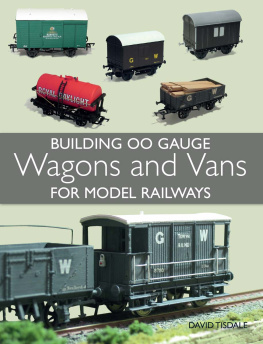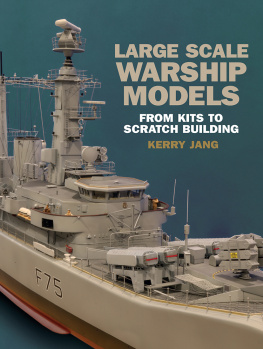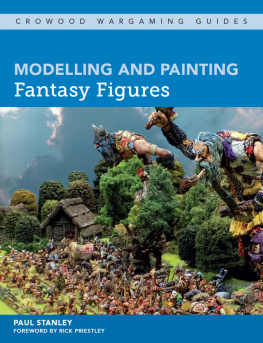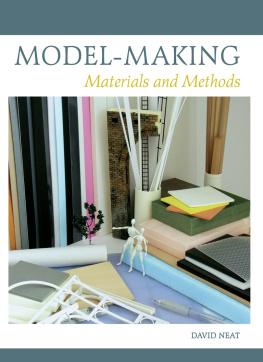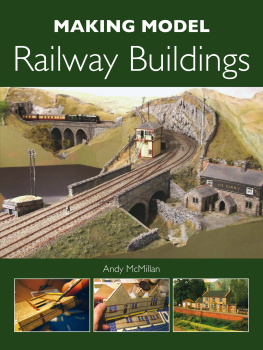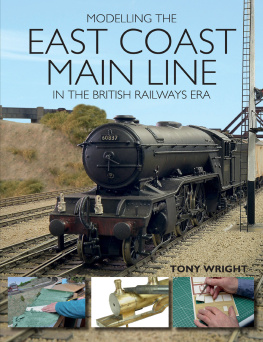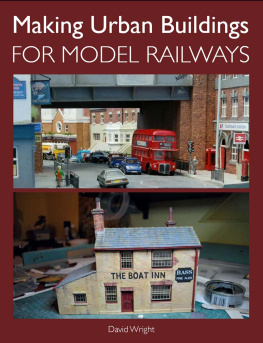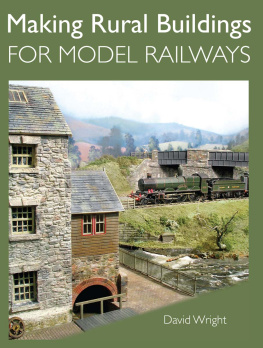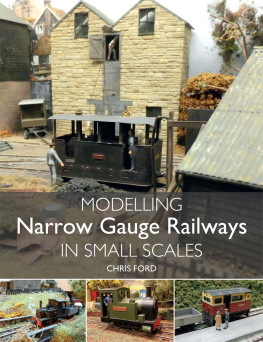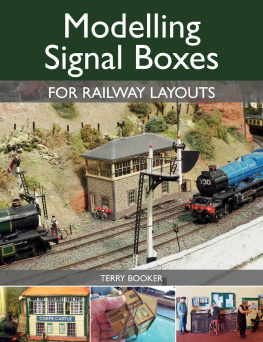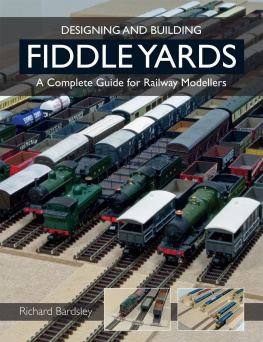
BUILDING OO GAUGE
Wagons and Vans
FOR MODEL RAILWAYS
DAVID TISDALE

First published in 2015 by
The Crowood Press Ltd
Ramsbury, Marlborough
Wiltshire SN8 2HR
www.crowood.com
This e-book published 2015
David Tisdale 2015
All rights reserved. No part of this publication may be reproduced or transmitted in any form or by any means, electronic or mechanical, including photocopy, recording, or any information storage and retrieval system, without permission in writing from the publishers.
British Library Cataloguing-in-Publication Data
A catalogue record for this book is available from the British Library.
ISBN 978 1 84797 984 1
Disclaimer
The author and the publisher do not accept any responsibility in any manner whatsoever for any error or omission, or any loss, damage, injury, adverse outcome, or liability of any kind incurred as a result of the use of any of the information contained in this book, or reliance upon it. If in doubt about any aspect of railway modelling readers are advised to seek professional advice.
CONTENTS
DEDICATION
I would like to dedicate this book to my family for tolerating my model railway stuff all over the house and especially to my understanding and loving wife Tracey thank you for the support and encouragement during the preparation of this book.
PREFACE
The idea for writing this book came to me whilst writing short magazine articles about the construction of a number of pieces of rolling stock. It seemed to me that there was not a simple, single source text on the subject that a newcomer to the hobby, or someone wanting to think beyond just ready-to-run and kit building, could turn to for ideas and guidance. An opportunity presented itself when by accident I came across a note in one of the popular monthly railway magazines to contact The Crowood Press if you had an idea for a book on model railways. A preliminary exchange of letters and emails ensued, followed by the submission of a book proposal, which was accepted and this book is the end result. I hope the book lives up to my original concept idea.
ACKNOWLEDGEMENTS
I would like to convey my thanks to my fellow railway modellers at the Jersey Model Railway Club for their support, advice and encouragement over the past few years that I have been a member.
As a railway modeller, a builder of kits and a scratch builder, I would like to give a special mention to the numerous dedicated and enthusiastic suppliers of kits and components on whom I and many others rely for supplies to feed our hobby. Without these people the railway modelling hobby would be a poorer place, so thank you for your industry and long may it continue.
CHAPTER ONE
WHY BUILD YOUR OWN ROLLING STOCK?
READY-TO-RUN OR BUILD-YOUR-OWN?
Given the quality of OO gauge ready-to-run (RTR) models available today from the likes of Bachmann, Dapol, Heljan and Hornby, where the level of fine detail is excellent, you might well ask why build your own rolling stock? You might also question as to whether you can achieve the same level of detail, running quality and overall finish to the model as can be achieved by the commercial manufacturers.
The answers depend on the level of skill and patience applied to the process. For me, the development of skills with practice gives me a great sense of satisfaction, when I have created something myself, rather than buying it from the shop, lifting it out of the box and playing with it. It is a sense of achievement to create something and, in my case, I enjoy striving to produce as high a quality model as my limited skills afford.
I have been asked a number of times over the years as to why I should want to build my own rolling stock when, especially in the last five to ten years, the quality of the RTR models on the market is very good. The answer is, I think, that it is the desire to create some examples of rolling stock that are not readily available as RTR models and the desire to have something just that little bit different or unique running on my layout.
TRAIN SET TO MODEL RAILWAY
Many of us, I am sure, will have been initiated to the hobby by the childhood train set as a Christmas or birthday present set on a flat board, with a loco and a couple of carriages and wagons trundling around in a circle. If you were very lucky and had the space, you may have had the opportunity to construct a more extensive train set in a spare room or loft. Over time this develops with the addition of more track, sidings, maybe some buildings and the start of scenery, and very soon the train set starts to become a more serious model, which could be termed a model railway layout rather than a train set. Maybe as one develops from a train set, the application of additional details loads for wagons, weathering, etc. to RTR items is the first step down the road to building your own rolling stock.
The first step commonly taken after the train set stage is to look to build a layout that is a little more realistic, or representative, of your chosen railway company, geographical area of country, or specific operation or activity served by a railway. It is at this stage that it usually becomes apparent that the rolling stock produced by the RTR manufacturers might not meet your requirements.
The RTR range of models may not have all the necessary examples of rolling stock that would be relevant to the period being modelled, the area that you are trying to create or a specific industrial use, and thus kit building becomes the favoured option. In fact thinking about it, the next logical extension of the development of your model railway after creating the scenery, permanent way and buildings or structures, is to put your own interpretation and skill in to the rolling stock to run on the layout.
The model railway press regularly includes articles about building kits, converting ready-to-run models and scratch building rolling stock, and these can be a source of inspiration and guidance for those considering undertaking any of these projects.
BUILDING YOUR OWN ROLLING STOCK
In the following chapters I will consider the options available for building your own rolling stock, in the case of this book in terms of OO gauge, although the ideas and techniques discussed in this book can easily be applied to any scale/gauge combination. I have myself applied this to N gauge, OO9 and O-16.5 scale modelling, having built kits and scratch built rolling stock in all three of these scale/gauge combinations, using skills that I have learnt from my OO gauge modelling.
Before diving into the construction of kits, I will look at the selection of material types and some basic tool requirements in , and will provide some guidance as to what different material types can be used for different modelling tasks and what tools you should consider purchasing before embarking on creating your own rolling stock. Once you have assembled a basic toolkit and a supply of materials, component parts and kits, it is then time to begin.
KIT BUILDING
In . kit building may not be everyones cup of tea, but if you have the basic skills from putting together a model plane or tank kit, such as those produced by Airfix, then this need not be seen as a huge step up in ability.
Kit building provides the opportunity to develop and hone your modelling skills using commercially produced kits, typically in plastic (see .
Next page
